|
Ahab : Дум-зарисовки на морскую тематику
| 2 фев 2010 |
В 2006 году из Мюнхена, столицы Баварии, пришли занятнее известия: вдали от берегов морских родился новый doom-бэнд имени бесноватого капитана Ахава, героя романа Германа Мелвилла «Моби Дик». Группа, самоопределившая свою музыку как “nautical funeral doom”, мигом привлекал внимание общественности и буржуинского лэйбла Napalm, руководство которого не прогадало, сделав ставку на четверку талантливых уроженцев Германии и выпустив полноформатный альбом “The Call Of Wretched Sea”. Посвятив свой первы... |





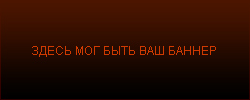
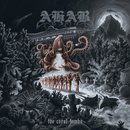
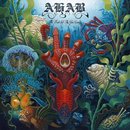
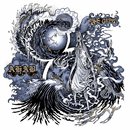
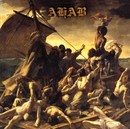




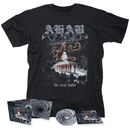



Vocalist/guitarist Daniel Droste and guitarist Christian Hector have carved a unique literature-inspired path through the high seas of doom and gloom since 2004. When their full length debut, The Call Of The Wretched Sea, surfaced in 2006 it was immediately clear that there was much more to AHAB than guttural growls, low-end walls of guitars and plodding swamp rhythms. The album served as a soundtrack for Herman Melville’s novel Moby Dick (published in 1851), right down to the artwork. The Divinity Of Oceans – with bassist Stephan Wandernoth and drummer Cornelius Althammer completing the roster – followed a similar route in 2009, with AHAB recounting the 1820 demise of the whaleship Essex, a tale that inspired Melville’s classic novel. It comes as no surprise, then, that the band has remained focused on the literature of the sea with The Giant. The written work they’ve chosen to honour this time out, on the other hand, is unexpected, leading to an equally surprising musical journey.
The Giant is a series of premieres for AHAB. Not only does the album boast first time guest vocals (courtesy of ENSLAVED’s Herbrand Larsen), it features all-original illustrated artwork, it was the band’s first time recording in a real studio as opposed to the comfort (and budget) of home, and they will embark on their first-ever European headline tour in the spring with ESOTERIC and OPHIS supporting.
AHAB was inspired this time out by Edgar Allan Poe’s work The Narrative Of Arthur Gordon Pym, a topic suggested by Wandernoth. According to Hector, “we had some other books in mind, but it was this one which seemed to be the most fitting to the current state of AHAB. Not too far away from Moby Dick and Essex, but something totally different at the same time. It’s quite a strange book, which is perfect for our music. It’s a mixture of a sea-faring documentary, psychedelic fiction, and is also said to be autobiographical to some extent. So, there are many levels in interpreting this stuff.”
With that in mind, AHAB have effectively thrown out all preconceived notions of what doom metal – funeral doom, death doom, take your pick – is supposed to be. Their Nautik Doom foundation is completely intact, but it has been injected with elements of EARTH (‘Time’s Like Molten Lead’, ‘Further South’), hints at classic BLACK SABBATH (‘Antarctica The Polymorphess’), going so far as to channel ALICE IN CHAINS (‘The Giant’) thanks to Larsen and Droste’s own clean voice. As much as AHAB are capable of crushing the listener into submission on The Giant with epic arrangements, they are as equally convincing when the music is reduced to clean breaks and contemplative whispers.
“If your goal is to interpret lyrics, you can’t always make the same music,” Hector says of the wealth of dynamics on The Giant. “You have to stick to your own style of music, and also capture the right mood of the book or story you’re interpreting with other styles. Of course there are always funeral doom hardliners, that want ‘their’ band to stay funeral doom only, but they’re not the majority. I’ve seen that doom fans are open-minded and interested in the story behind the music. I don’t underestimate them. All music on The Giant is connected with extreme doom or some of the stranger stuff that’s related to the scene, which is more post-rock/doom, shoegaze or stuff like EARTH, which is based more on slow southern blues. We don’t want to repeat ourselves. That’s boring.”
Ultimately, AHAB have created a work of art and not merely an album. The Giant is something to be immersed in rather than simply heard, so that you feel the warmth of an analog recording even as the cold doom rolls in wave after wave. It’s also an album that will appeal to non-doom fans willing to keep an open mind.
“AHAB has always been more than just a group of musicians,” says Hector. “We always wanted to create something that gets into your mind via all levels of reception. Most of the fans actually got into AHAB because we have a sense for other arts, like lyrics, prose, painting, etc. That’s something we have in common with our fans, and I think that’s why the whole artistic side of AHAB is accepted by the doom scene and people outside of it.”
CARL BEGAI (Brave Words & Bloody Knuckles)